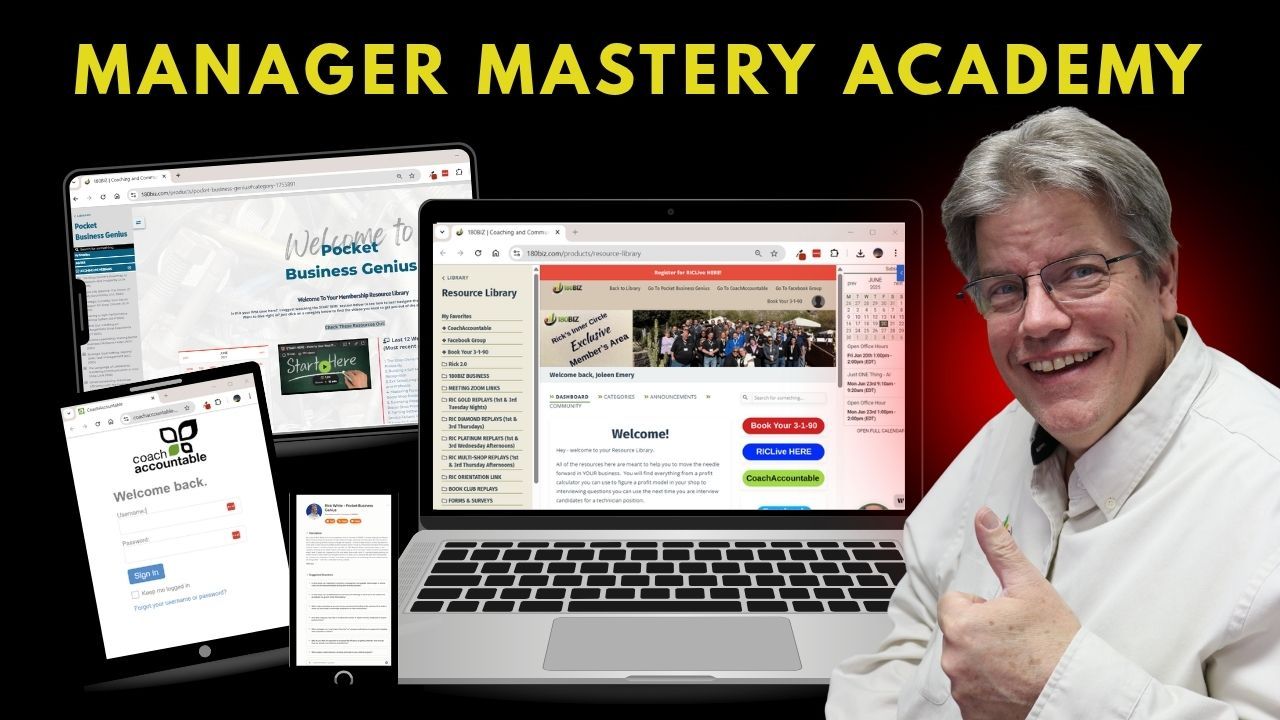How Auto Repair Shop Owners Communicate Effectively
Communicating Effectively Step 2 - Identify Causes by Rick White, President 180BIZ
We started this conversation last week about being able to communicate more effectively. And there are a few things I want to talk about today. The reason why your communication is not as effective as it could be is that you're coming to the situation from your perspective, which makes sense. It's normal. But for you to be effective, you must be able to see the other side as well. That's what we talked about last week. So, the first part of effective communication is understanding their world and appreciating it from their perspective. The second part of effective communication is to identify the causes of a particular situation.
Situations can be both positive or negative. It can be either one. In fact, you want to be sure to have these kinds of conversations with the positive, not just the negative. Too many times when something goes well, we party. And it's only when things go wrong, we ponder. What went wrong? What could I have done better? Who am I going to blame? What am I going to blame? But when things are going really well and you ponder, you can still party, but ask, “What's different?” If you talk to your team about what went right, you're going to be able to recreate it.
That is a big deal. Here's what will happen. I promise you this happens all the time. You have a really great month. It was the best month you've ever had. Then you wait three or four months. And someone asks, “ What did you do? What caused it?” The typical answers are, “It was just the customers. It was just the right kind of labor where we had the right kind of work.” I’m here to tell you NO WAY! You did something different. You engaged differently. You did your evaluations differently with the vehicles. You are communicating differently, or you listened better. You saw your clients and you did things differently. So the first thing I want you to understand is you always got to step back in, look at what is going on.
Number one, understand or appreciate their perspective. That's the first step in effective communication. The second step in effective communication is to identify. So what does that mean? It sounds like this. “Now that I understand your perspective, what do you think are some things that might be causing this? If something's not going the way I want, what do you think are some things that might be causing this?” And you’ll start to identify possible issues or challenges or situations or changes that created this situation. And by bringing the other person or the team in and asking them, you're going to find possible causes of the situation. The first key point is to PONDER ALWAYS.
The second key point is when you ask them to IDENTIFY THE CAUSES, they are bringing them up. When they bring them up, you're going to find them much more responsive to a conversation and improvement. When you pound on them, accuse them, and lay blame without discussion, they’ll do one of three things. They’ll stand and fight, they’ll walk away in flight, or do nothing and freeze. But either way, they are less engaged with you with your business. That's not the goal. The goal is to bring them in and make them a part of the solution. Even if they're the problem, you bring them in as part of the solution.
That gets them to be much more receptive to the suggestions that you can make later in a question format. That will help your situation get better, or maybe even be able to recreate it. So, the first part of the four effective communication steps is to understand and appreciate their perspective. What's happening to them, seeing it from their eyes, the best you can. And I’ll be honest with you. It's not easy. It's not easy, especially when you are a hundred percent associated with the problem. So I want you to step back, understand and appreciate what's going on from their perspective. See it from their eyes. They might be carrying some pain. So, I want you to understand and appreciate. Then identify together. Identify together what some possible causes might be. That's the next step. Now once you get there, we're going to talk next week about what we do in step number three.
I want you to have the best week you've ever had. And you're going to do that with intention, attention, and action. God bless, have fun, stay safe and go make some money.
Want to learn more about transforming your business?
Join my mailing list to get advice you can use to improve your shop, the day it lands in your inbox.
Don't worry, your information will not be shared.
We hate SPAM. We will never sell your information, for any reason.



